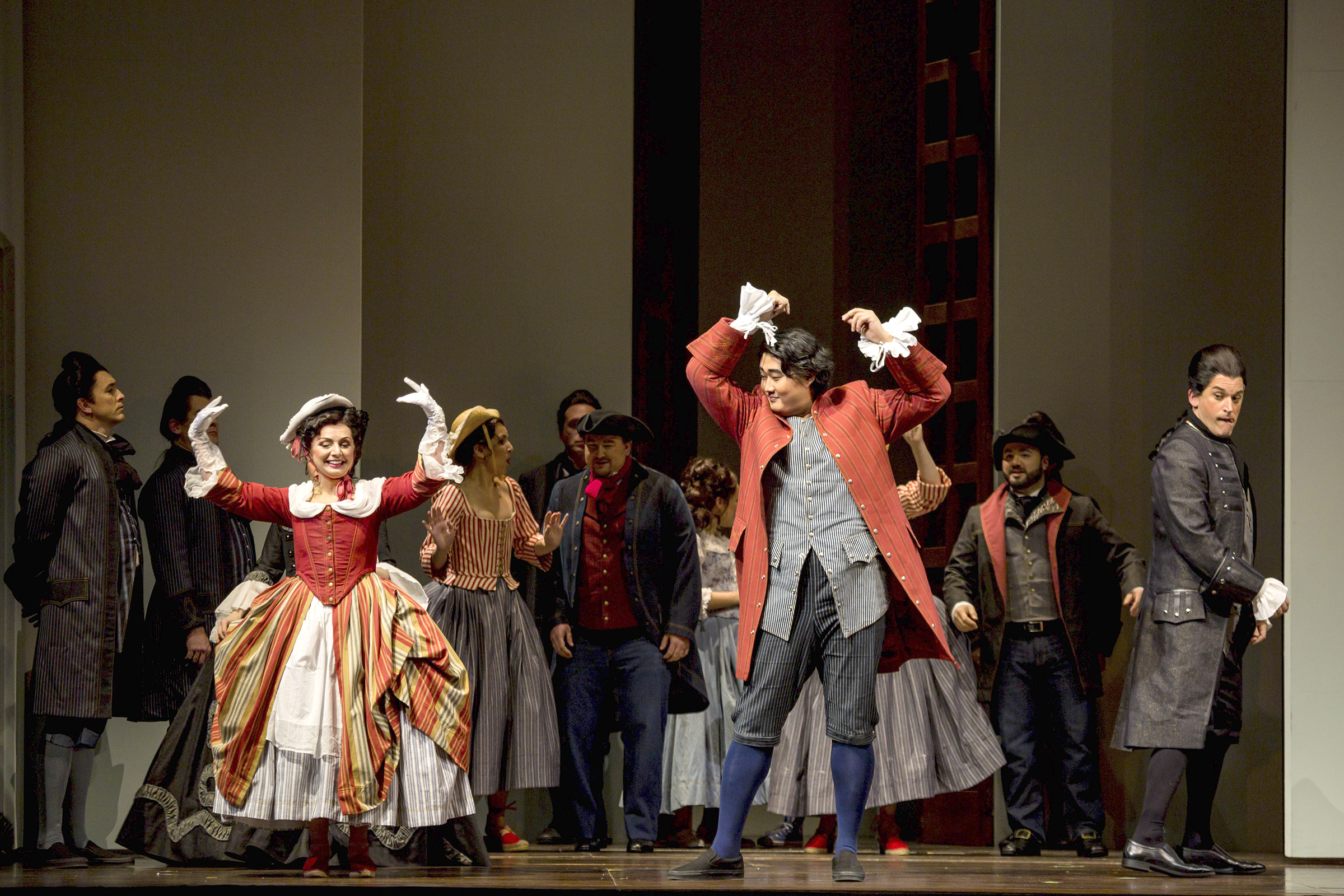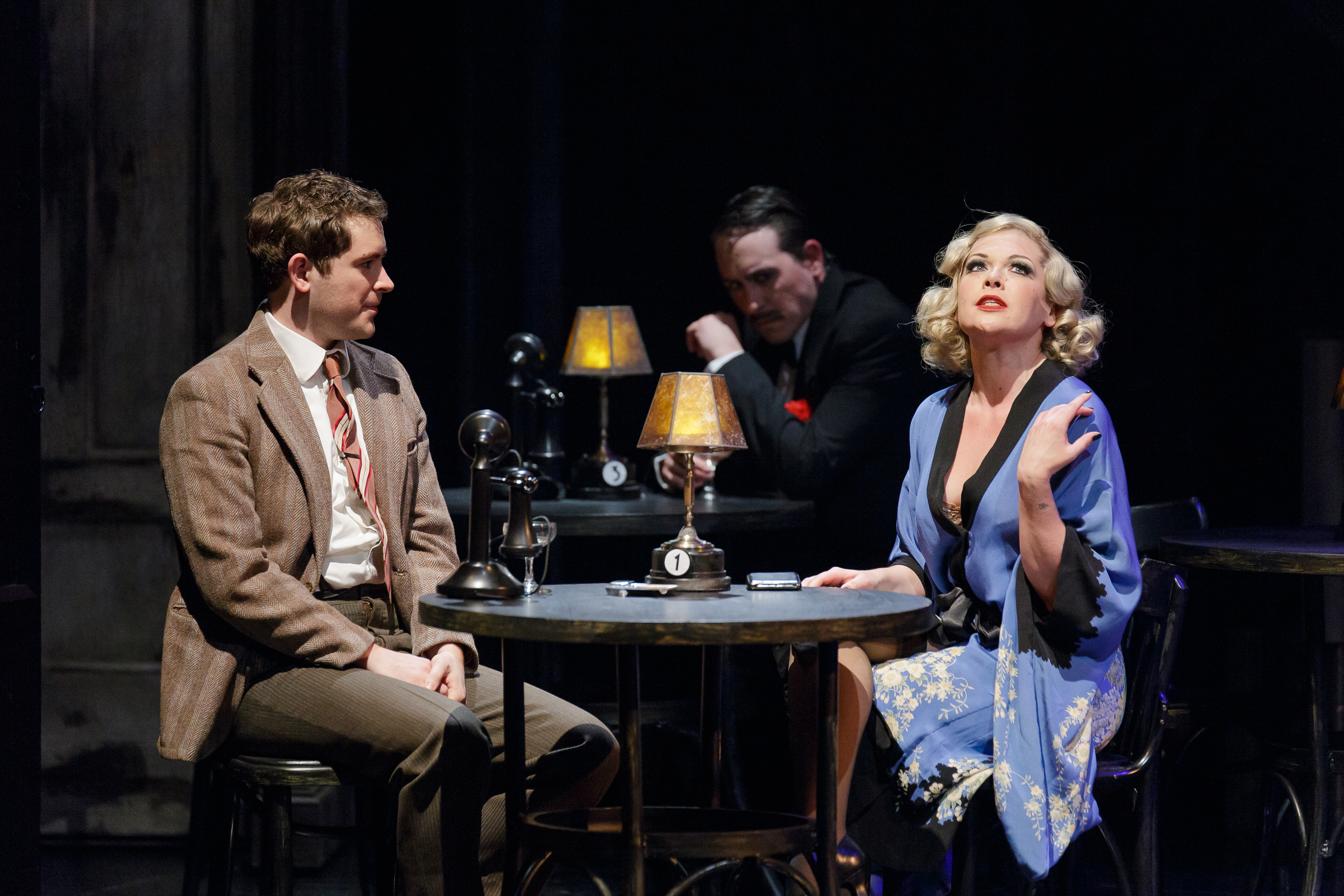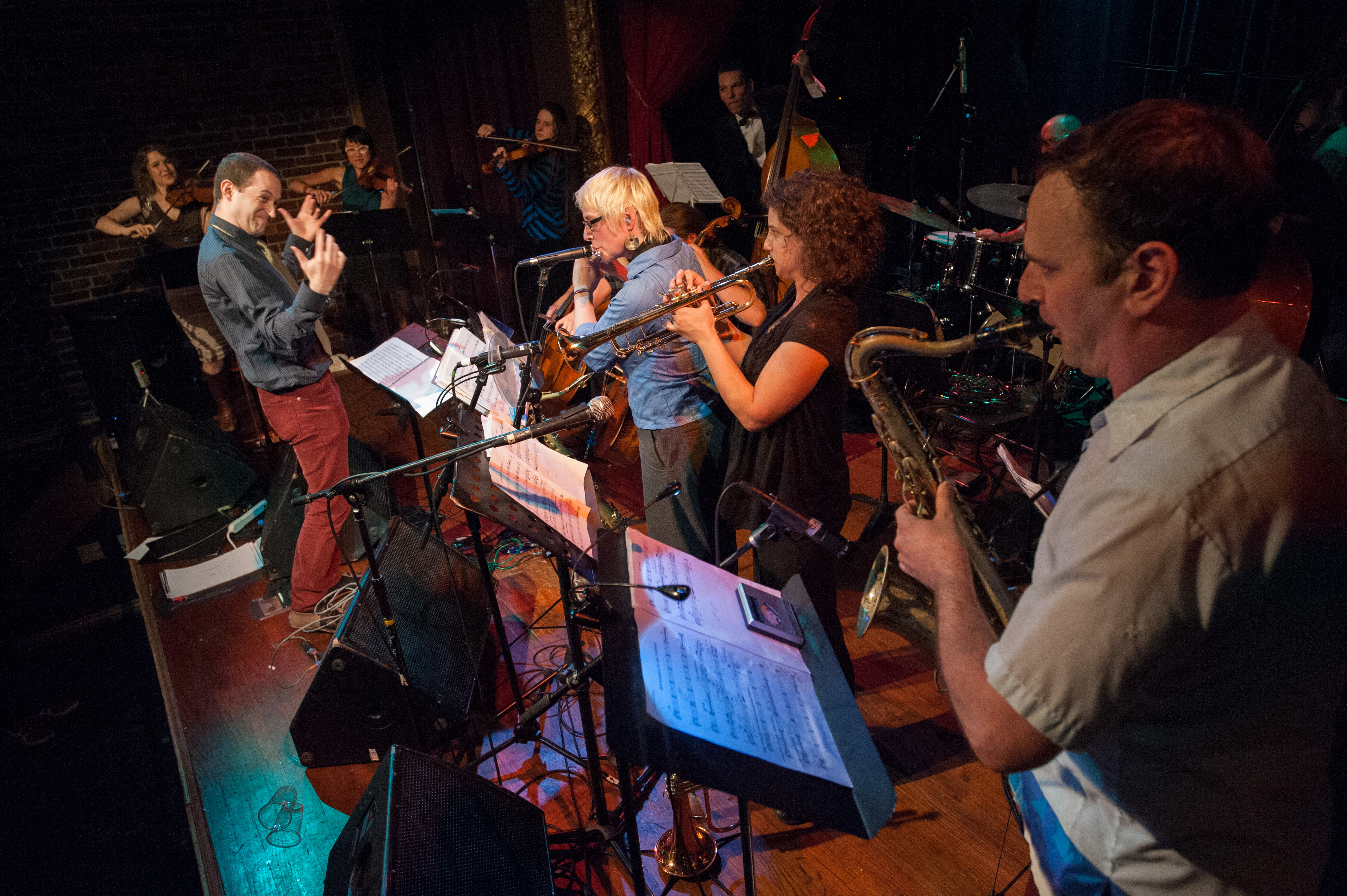An interesting letter is found in the program for Seattle Opera’s staging of The Marriage of Figaro that opened Saturday. Written by Board of Directors president Maryann Tagney, it states that, for her at least, the production was “a factor in selecting Aidan Lang as general director.” Lang first staged Mozart’s 1786 comedy for New Zealand Opera, where he’d also held the position of general director before assuming the Seattle Opera post in the fall of 2014. It’s a new path for the company; not everyone can jump from artist to administrator and back again, and Lang’s predecessor, Speight Jenkins, as I recall, never directed a production. (Though I’m guessing he never hesitated to make his opinion known about what was going on onstage.)
And Figaro is a significant challenge, mixing silliness and romance with bittersweet undertones and social commentary—an upstairs/downstairs tale of changing mores among the lesser nobility (anticipating, in this sense, Downton Abbey). Specifically, Count Almaviva has vowed to give up his droit du seigneur, the right to bed his valet Figaro’s bride Susanna on their wedding day—though this doesn’t stop him from chasing her, or from neglecting his wife. The opera, like the Beaumarchais play it’s based on, is filled with farce—characters are constantly hiding or donning disguises—and in terms of sheer comedy mechanics, Lang earns an A for Act 1, a B for the Act 2 finale (some unfocused wandering in the blocking makes the scene feel its length), and a C- for the final scene, set in a garden, when the Count is finally caught by his own wife dressed as Susanna. Having actors pretend not to see one another is no substitute for arranging them so they’re actually not visible to one another; it’s a disbelief I’m never able to suspend, especially in stagings of this opera.
Robin Rawstorne’s modular set is ingenious if none too attractive, with walls and panels sliding about to suggest several different rooms in the Count’s palace. These shifting spaces unnecessarily cramp a few scenes, but intensify others—for example, the Count’s Act 3 revenge aria, “Vedro mentr’io sospiro,” sung in a closet, the close walls suggesting his impotent desperation. Baritone Morgan Smith is well cast in the role; a familiar face to Seattle audiences as both villains and heroes, he strikes a skillful balance between comedy and menace.
As Figaro, Shenyang is most charismatic in his Act 4 aria “Aprite un po’quegli occhi,” bitter over the fickleness of women. Nuccia Focile plays the smart and pragmatic Susanna a bit affected and “ladylike,” missing—or choosing not to emphasize—the character’s down-to-earth quality, her most potent weapon. Among the minor roles, Steven Cole as Basilio, an intriguer, makes the biggest impact, bringing him a brilliant character voice, a delicious nasality somewhere between an oboe and Paul Lynde.
Vocally, no performance surpasses Bernarda Bobro’s captivating “Dove sono.” The Countess’ Act 3 lament presents a notorious test that even the loftiest divas approach with trepidation. (A few years back, at her Benaroya Hall recital, soprano Renee Fleming solicited audience suggestions for encores; when someone called out “Dove sono!”, she responded, with a wry half-smile, “You sing it.”) Frighteningly difficult in its simplicity, it’s a tune so clear and pure it exposes the slightest imperfection. Of which there were none thanks to Bobro’s soprano, silvery and fluent—think liquid mercury.
In the pit, Philip Kelsey mans the fortepiano adroitly, turning the recitative accompaniments into witty incidental music. The most vivifying aspect of conductor Gary Thor Wedow’s handling of the Seattle Symphony is the prominence of the horns (at least from where I sat), adding muscle tone to the orchestra’s sound. His finest moment is the courageously broad tempo he’s chosen for the Countess’ climactic pardon of the Count and the ensuing ensemble, making it just the rapturous emotional climax it ought to be. E
gborchert@seattleweekly.com







